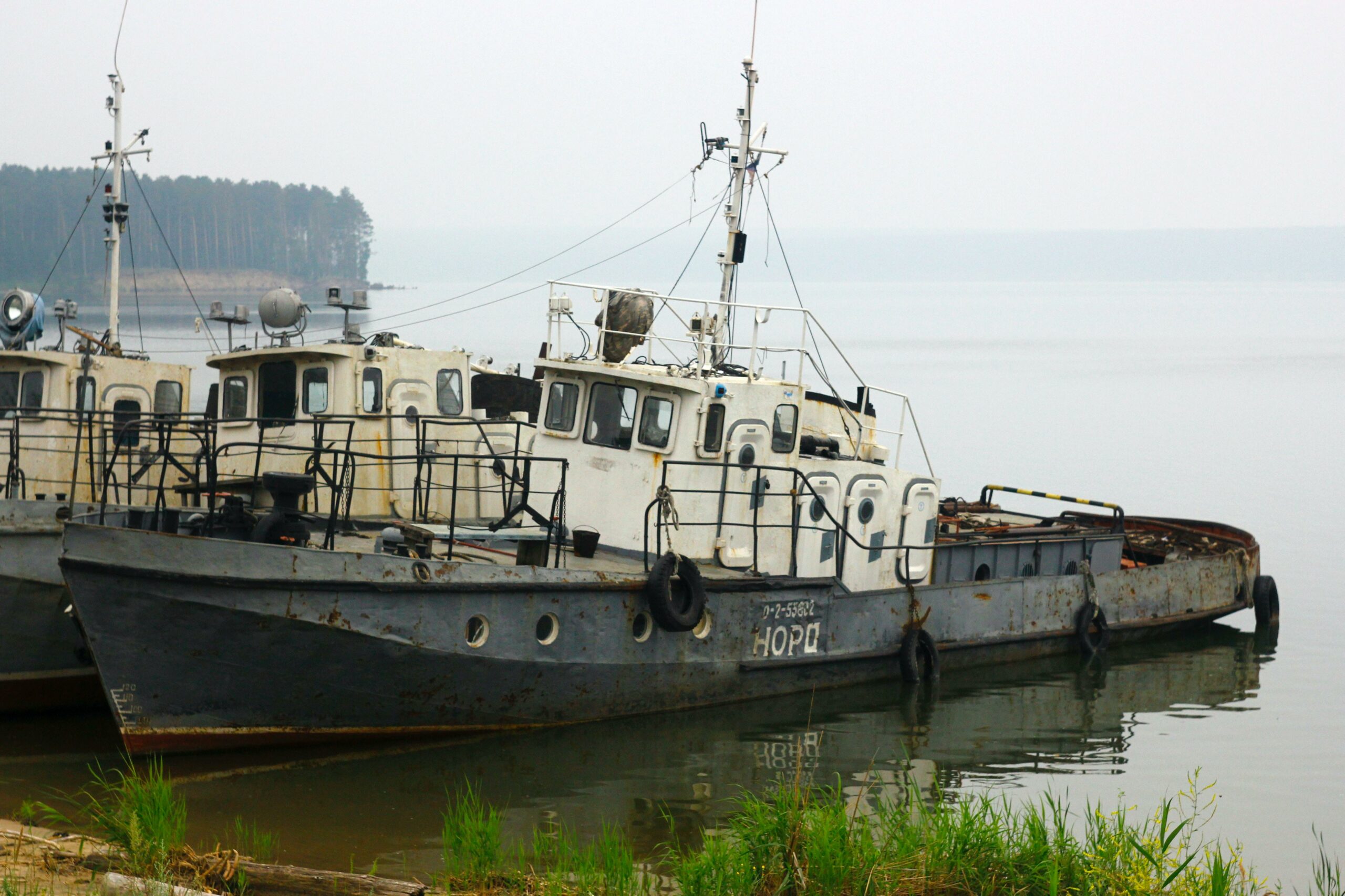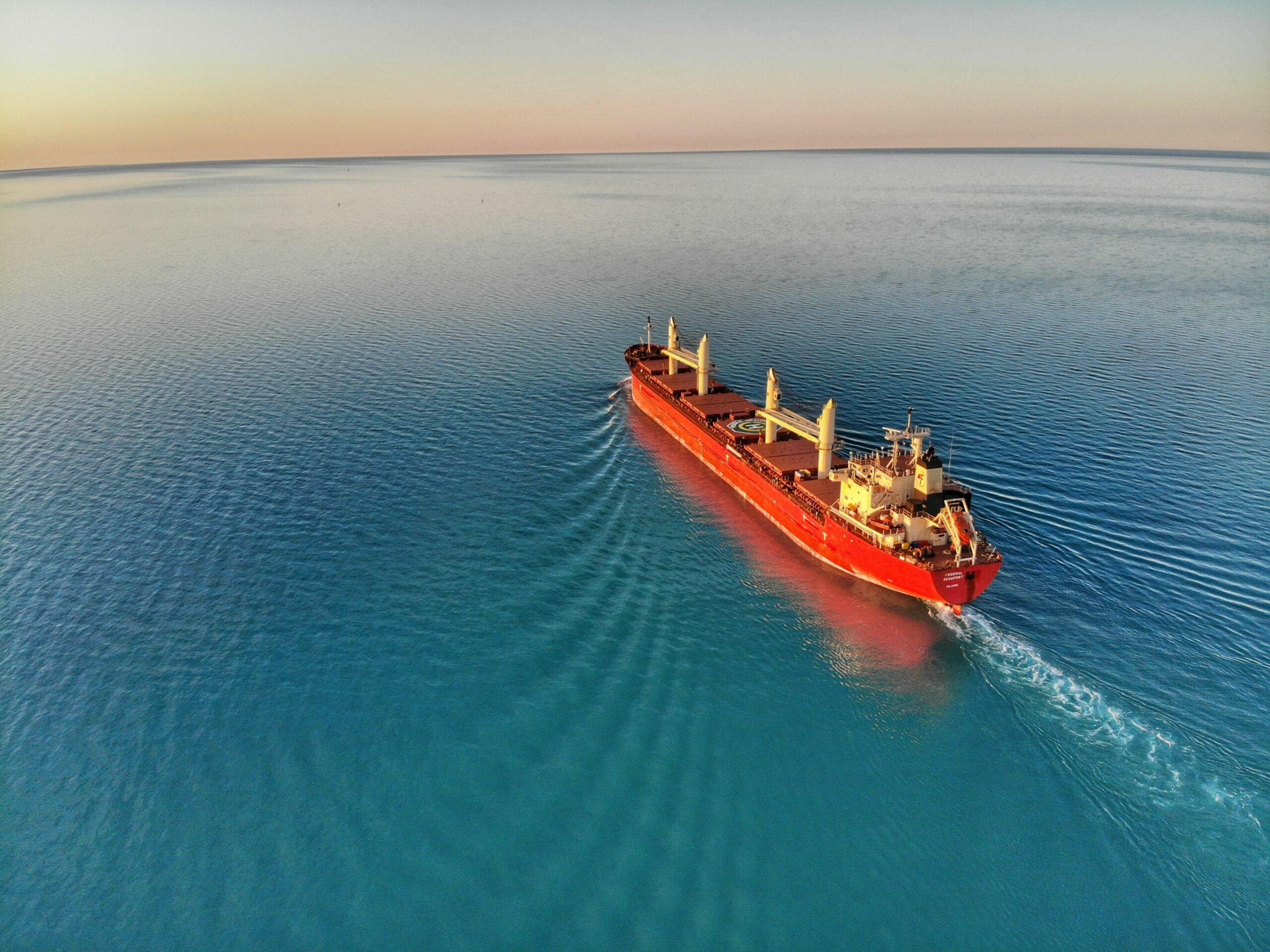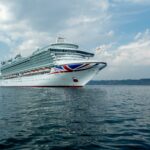Welcome aboard the journey of ship trivia! In this article, we will embark on an extraordinary voyage through the vast sea of knowledge to discover 100 riveting facts about ships. Whether you’re an avid maritime enthusiast or someone who simply appreciates the wonders of these magnificent vessels, prepare to be amazed as we navigate through the intricate details and fascinating stories behind ship design, construction, and operations. Guided by an experienced maritime enthusiast and writer, we will dive deep into the world of ships, unraveling their secrets, and presenting them to you in a concise and accessible manner. So, fasten your seatbelts, or should I say life jackets, as we set sail on this exceptional adventure of ship trivia!

100 Facts About Ships
Ships have always held a certain allure, captivating our imaginations with their grandeur and mystery. From their historical significance to their modern-day marvels, ships continue to fascinate us. Prepare to be amazed as we dive into a treasure trove of 100 riveting facts about ships that will leave you in awe.
Ships come in all shapes and sizes, ranging from small sailboats to colossal container ships that can stretch up to 1,300 feet in length. These giants of the sea are truly a marvel of engineering and logistics.
The world’s largest privately-owned residential cruise ship, “The World,” allows residents to permanently live on board as it travels around the globe. Talk about a unique way to explore the world!
Believe it or not, 90% of all goods are transported by ship, making shipping an essential industry for the global economy. Without ships, our world would be a very different place.
The Greek-owned fleet is the largest international merchant fleet, accounting for a staggering 16% of the world’s tonnage. Greeks have a deep-rooted connection to the sea, and their fleet reflects their rich maritime history.
While most ships are made of steel, some unique vessels are crafted using a mixture of wood pulp and ice called pykrete. This innovative material was developed during World War II and had the potential to be used for aircraft carriers.
Ships have a life expectancy of around 20-30 years for ocean-going cargo ships and 30-40 years for sailboats made of plywood or fiberglass. Like any other vehicle, ships also have a limited lifespan.
A ship is comprised of various components, including the hull, propulsion system, steering system, compartments, holds, superstructure, and equipment like anchors and winches. Each part plays a crucial role in the ship’s overall functionality.
Ships serve a wide range of purposes, from trade and warfare to industry and pleasure. Different types of ships are designed to fulfill specific needs, showcasing their versatility and adaptability.
Shipping plays a vital role in world trade, facilitating the import and export of goods. Without ships, global trade would grind to a halt, impacting economies around the world.
Ship construction is a fascinating process that involves a myriad of materials, design considerations, and intricate processes. It’s a testament to human ingenuity and engineering prowess.
Larger ships require specialized infrastructure and protocols for their operations. Ports and harbors need to be equipped to handle these giants of the sea, ensuring smooth and efficient operations.
In maritime tradition, ships are often referred to as “she”. This tradition harkens back to ancient times when ships were considered symbols of femininity and beauty.
Ships have specific terms and areas unique to their structure, such as the poop deck and monkey island. These nautical terms add to the charm and mystique of ships.
Great Circle Sailing is a navigational method used in ships to determine the shortest distance between two points on the Earth’s surface. Sailors utilize this technique to optimize their routes and save both time and fuel.
The exploration and expansion of maritime activities have been heavily reliant on shipping. Ships have played a pivotal role in colonizations, discoveries, and the growth of coastal communities.
Waterborne vessels have been in use since ancient times, with historical records dating back thousands of years. Ships have been integral to human progress and exploration.
Boats and ships are among the oldest modes of transportation known to humankind. They paved the way for civilizations to connect, trade, and expand their territories.
Some ships have defense mechanisms in place to protect against piracy and other threats on the high seas. These measures ensure the safety and security of the ship and its crew.
Safety is of paramount importance in the maritime industry, and ships have various measures in place to ensure the well-being of passengers and crew. From stabilizers for stability and comfort to life-saving equipment, every ship is equipped to handle emergencies.
Large ships require specialized waste management systems to comply with environmental regulations. These systems ensure that ships minimize their impact on the oceans and maintain the delicate balance of marine ecosystems.
Fueling large ships is a complex process that involves specialized equipment and procedures. These vessels require massive amounts of fuel to power their engines and keep them running efficiently.
The shipping industry faces various risks and challenges, including fire hazards and the threat of piracy. Companies invest heavily in safety and security measures to mitigate these risks and protect their assets.
The shipping industry is constantly evolving and adapting to meet the demands of global trade. From adopting new technologies to implementing more sustainable practices, innovation is key in this fast-paced industry.
These are just a few of the many fascinating facts about ships that showcase the grandeur and significance of this remarkable industry. Ships encompass centuries of human ingenuity, exploration, and trade, and their impact on our world cannot be overstated. So next time you see a ship sailing on the horizon, take a moment to appreciate the incredible feats of engineering and the rich history that lies within its beautiful hull.
“Ships are the floating giants that connect continents, the lifelines of global trade. From the largest container ships carrying millions of goods to the smallest sailboats navigating the open seas, ships embody human ingenuity and a shared passion for exploration. Let these 100 captivating ship facts ignite your curiosity and deepen your appreciation for these majestic vessels.”
Here is an active internal link for you:
Find out fascinating facts about ships
Did you know that ships have played a crucial role in shaping our world as we know it? From ancient times to modern marvels, ships have carried explorers, goods, and cultures across vast oceans and seas. If you’re curious about the history, technology, and interesting anecdotes surrounding ships, click here to dive into a treasure trove of facts about ships. Get ready to be amazed by the feats of engineering, brave explorers, and epic naval battles that have defined our maritime history. Don’t miss out on this opportunity to embark on an exciting voyage of knowledge and discovery!
100 Facts About Ships
Are you fascinated by the maritime industry? Do you want to learn more about the incredible world of shipbuilding and naval architecture? Look no further! We have compiled a comprehensive list of maritime industry facts, shipbuilding facts, and naval architecture facts just for you. Brace yourself for a captivating journey through the depths of the maritime world.
Let’s start with some maritime industry facts. Did you know that the maritime industry is responsible for 90% of global trade? It’s mind-boggling to think about the massive scale of operations happening at sea. If you’re interested in delving deeper into this fascinating industry, click here for more maritime industry facts.
Moving on to shipbuilding facts, did you know that the world’s largest shipbuilding country is China? With its booming economy and vast resources, it’s no wonder they dominate the shipbuilding market. If you want to discover more intriguing shipbuilding facts that will leave you in awe, click here.
Now, let’s dive into the world of naval architecture facts. Did you know that naval architecture is a specialized field that combines engineering and design principles to create seaworthy vessels? It’s a profession that requires extensive knowledge and expertise. If you’re curious to explore more mind-blowing naval architecture facts that will make you appreciate the engineering marvels of ships, click here.
It’s remarkable how much there is to uncover about the maritime industry, shipbuilding, and naval architecture. Whether you’re a maritime enthusiast, a curious explorer, or someone looking to expand their knowledge base, these facts will surely captivate your attention. So, why wait? Click on the links above and embark on an exciting journey through the world of ships!
Keywords and URLs:
– maritime industry facts
– shipbuilding facts
– naval architecture facts
Cruise ships can provide a relaxing getaway for many people, but they also have their fair share of secrets and surprising facts. In this article section, we will explore some mind-blowing information about cruise ships that you probably didn’t know.
[youtube v=”WK10mKYujXA”]
One of the most astonishing facts about cruise ships is their size. In the past, the Titanic was considered the largest passenger ship ever created when it was completed in 1912. However, today’s cruise ships make the Titanic look like a toy. Almost every cruise ship currently sailing is larger than the Titanic, which was 882 feet long and weighed 46,000 tons. To put it into perspective, the largest cruise ship in existence today is the Royal Caribbean’s Wonder of the Seas, measuring approximately 1188 feet long and weighing a whopping 235,857 tons. This incredible vessel can hold nearly 7,000 passengers, along with over a thousand crew members. It boasts a wide range of amenities, including zip lines, a surf simulator, a miniature golf course, numerous water slides, multiple theaters, and over 10 restaurants. The Wonder of the Seas truly has more people on board and activities to enjoy than many small towns around the world.
Building a cruise ship is a massive undertaking that requires years of construction and millions of man-hours to complete. These floating cities are not built as a single vessel, but rather in separate sections that are later welded together. Enormous cranes and machines are necessary to align and secure these sections. It’s no wonder that building a cruise ship can take so much time and effort.
To enhance the visual appeal of their vessels, cruise ships employ certain tactics to trick passengers into perceiving them as more aesthetically pleasing. In the past, ships needed multiple funnels to release smoke and fumes from their engines. However, with advances in technology, modern cruise ships utilize engines that run more efficiently, reducing the need for multiple funnels. Despite this, many cruise ships still feature multiple fake funnels purely for decorative purposes, giving the vessels a symmetrical appearance.
If you’ve ever stayed in an interior cabin with no windows, you know how claustrophobic it can feel. Fortunately, some cruise ships have found a way to alleviate this issue. By installing LED screens in the walls of these cabins, passengers can enjoy a live stream video of what the ocean looks like from the top deck of the ship. This innovative solution provides an ocean view experience, even in the most budget-friendly cabins.
While cruise ships primarily serve as vacation destinations, they are also equipped to handle unexpected events and emergencies. Some ships have morgues on board to accommodate the unfortunate event of a passenger or crew member’s passing. Additionally, cruise ships house a series of holding cells to manage unruly behavior and act as temporary detention areas when necessary. Cameras are installed throughout the ships to ensure security and safety, as well as monitor guests’ activities, locations, and adherence to the ship’s rules.
Despite the indulgence often associated with cruises, these floating vacations also cater to those seeking sobriety. Alcoholics Anonymous meetings, often referred to as “get-togethers for friends of Bill W” in cruise itineraries, provide an opportunity for supportive gatherings. These meetings acknowledge the potential challenges of remaining sober while surrounded by a plethora of alcoholic beverages and temptations.
The crew members aboard cruise ships are the unsung heroes of these floating resorts. They work tirelessly, often with demanding schedules and unique working conditions. In fact, crew members have their own language composed of secret code words to communicate various events and issues on the ship. For example, “30 30” on Royal Caribbean signifies the need for crew members to clean up a mess, while terms like Alpha and Bravo indicate medical or fire emergencies. If you hear crew members using unfamiliar jargon and notice them bustling about, it’s likely a sign that something significant is happening, and it’s advisable to grab your life vest.
Life for the crew members on a cruise ship is both challenging and demanding. They sleep in the bottommost levels of the ship, where their rooms are below the waterline and devoid of any windows. This lack of natural light is a trade-off for space utilization, as these areas accommodate the living quarters and mess hall for the hundreds or even thousands of crew members needed to cater to the passengers’ needs. Despite their hard work and limited privacy, crew members are often required to work for months without a single day off. Their contracts can range from three to eight months or even longer, ensuring that passengers receive the service they expect throughout their cruise experience.
Transitioning from the everyday world to a cruise ship lifestyle can be jarring, especially for crew members traveling from countries far from the ship’s port of departure. To ease the logistics, cruise companies often fly their crew members to and from the port location where their ship is docked. This practice allows the crew to efficiently join the ship for work and return home after the completion of their contract.
Cruise ships serve as more than just vacation destinations; they are also capable of performing rescue and humanitarian operations. It is not uncommon for cruise ships to respond to distress signals from stranded vessels, offering assistance to smaller ships and boats in need. During times of disaster, such as Hurricane Katrina in 2005, cruise lines have offered their ships for humanitarian efforts. Thousands of people from New Orleans found refuge aboard Carnival Cruise ships docked off the coast, where the crew tirelessly supported and comforted the displaced individuals.
Some individuals are so enamored with the cruising lifestyle that they decide to make it their permanent residence. The World, a luxury ocean liner, allows individuals to purchase permanent residences aboard the ship. With options ranging from studios to three-bedroom apartments, residents can wake up in a different part of the world every day. While the price of these rooms is not publicly listed, one can only imagine the luxury and convenience that comes with calling a cruise ship “home.”
With thousands of passengers on board, cruise ships generate an astonishing amount of waste. Between the buffet meals and daily use of linens, an average-sized cruise ship produces approximately 21,000 gallons of sewage per day. Although most cruise ships store this sewage and offload it after the cruise, unfortunately, some ships do not adhere to proper waste disposal regulations. These ships end up harming aquatic ecosystems by directly dumping a portion of their waste into the ocean. It is important to note that responsible cruise lines strive to minimize their environmental impact and are committed to mitigating waste disposal issues.
Featuring a historically male-dominated domain, the cruise ship industry had a significant milestone in 2007 when Karin Stahre-Janson became the first female captain of a cruise ship. Employed by Royal Caribbean, she was given command of the Monarch of the Seas. Some believe that the delay in appointing the first female captain stemmed from superstitions associating women on ships with bad luck. Another persistent maritime superstition revolves around bananas. Many ships refuse to bring bananas on board due to the belief that they are bad luck and could cause the ship to sink. While this might seem peculiar, it is important to remember that maritime superstitions have been passed down for generations, often without any logical basis.
Cruises offer more than just breathtaking views and relaxation—they can also be a platform for live entertainment. Most cruises include a large theater that can accommodate hundreds of people. In some instances, entire cruises are dedicated to a specific band or concert series. For example, the Kiss Cruise 7 aboard the Norwegian Pearl allowed guests to watch their favorite band perform live every night. It’s not every day that you can enjoy your favorite bands or artists while sailing the high seas.
If you can’t bear being separated from your furry friend, there is a limited option for bringing them along on a cruise. The Queen Mary 2 is the only cruise ship that allows pets. However, there are strict limitations, as they only permit 24 cats or dogs on board at a time. Although bringing your pet on a cruise may seem enticing, be prepared to pay a significant fee, ranging from $1,000 to $1,600 per pet, in addition to your own ticket.
Lastly, it’s essential to acknowledge that cruise ships are not just vessels for leisure; they can also serve as vital resources during times of crisis. Cruise lines have played a significant role in humanitarian efforts, particularly during natural disasters. For instance, during Hurricane Katrina, Carnival Cruise ships accommodated thousands of people from New Orleans who had been displaced. The crew members did their utmost to provide comfort and support, making their stay onboard as pleasant as possible.
In conclusion, cruise ships offer an array of mind-boggling facts and secrets that make them more than just floating resorts. From their immense size to their innovative solutions for interior cabins, these vessels continue to amaze and captivate passengers. Behind the scenes, crew members work tirelessly to ensure a smooth and unforgettable vacation experience. Cruise ships are not only places of indulgence but also platforms for rescue operations, humanitarian endeavors, and even permanent residences. With their own language, secret code words, superstitions, and measures to enhance passenger safety, cruise ships provide a unique and exciting environment for both passengers and crew members alike. So next time you embark on a cruise, remember that there is much more to these enormous floating cities than meets the eye.
FAQ
Q: How many goods are transported by ships?
A: Around 90% of all goods are transported by ships, making shipping a crucial industry for the global economy.
Q: Which country has the largest international merchant fleet?
A: The Greek-owned fleet is the largest international merchant fleet, accounting for 16% of the world’s tonnage.
Q: What are some interesting ship construction materials and design processes?
A: Some interesting ship construction materials and design processes include the use of pykrete, which is a mixture of wood pulp and ice, and the incorporation of various components such as hulls, propulsion systems, steering systems, compartments, holds, superstructures, anchors, and winches.
Q: How long is the life expectancy of ships?
A: Ships have a life expectancy of around 20-30 years for ocean-going cargo ships and 30-40 years for plywood or fiberglass sailboats.
Q: What are some unique terms and areas in ships?
A: Ships have specific terms and areas that are unique to their structure, such as the poop deck and monkey island.
- Sept 31 Myth: Unveiling Calendar Secrets - March 18, 2025
- How Long & Till December 18, 2025: Accurate Countdown Guide - March 18, 2025
- Discover Japanese Artists: A Complete History - March 18, 2025
















